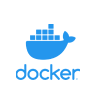How to Set Up Postgres using Docker


In the world of databases, PostgreSQL or Postgres is one of the most popular open-source relational database management systems. Docker, on the other hand, is a platform for developers to build, ship, and run distributed applications.
Setting Up Postgres Using Docker Image
Before we begin, make sure that you have Docker installed on your system. If you don't, please install Docker first. You can download Docker for your operating system from the official Docker website. Once you have Docker installed, follow these steps to set up Postgres using Docker:
1. Pull the Postgres Docker Image
The first step is to pull the Postgres Docker image from the Docker Hub repository. This is done by running the following command:
This command will download the latest version of the Postgres Docker image.
2. Create a Docker Volume
Next, we need to create a Docker volume to persist our Postgres data. This is done by running the following command:
The above command will create a Docker volume named postgres_data. This volume will be used to store our Postgres data even if the container is removed.
3. Run the Postgres Docker Container
Now we can run the Postgres Docker container using the following command:
The above command will create a container named postgres_container, set the environment variable POSTGRES_PASSWORD to mysecretpassword, map the container port 5432 to the host port 5432, and link the Docker volume postgres_data to the container directory /var/lib/postgresql/data.
4. Verify the Container is Running
To verify that the Docker container is running, run the following command:
This will list all the running Docker containers. You should see the postgres_container listed.
5. Connect to the Postgres Database
To connect to the Postgres database, we will use a PostgreSQL client. If you don't have one installed, download and install DbVisualizer, a top-rated PostgreSQL client, then, once you have a client installed, connect to the database using the following details:
- Host: localhost
- Port: 5432
- Database: your database (in this case, the database is postgres)
- Username: your username (in this case, the username is also postgres)
- Password: your password (in this case, mysecretpassword)
Connecting to the new Postgres Docker Container using DbVisualizer.
↓

↑ Connecting to the new Postgres Docker Container using DbVisualizer.
That's it! You have successfully set up PostgreSQL using Docker.
Benefits of Using Postgres with Docker
Using Postgres with Docker has many benefits. Some of the benefits are:
1. Easy to Use
Setting up Postgres using Docker is very easy. You don't have to worry about installing and configuring PostgreSQL on your system. You can simply run a Docker container and start using PostgreSQL.
2. Isolated Environment
Docker provides an isolated environment for running applications. This means that you can run Postgres in a container without worrying about affecting other applications on your system. It also means that you can easily switch between different versions of PostgreSQL without affecting other applications.
3. Easy to Deploy
Deploying PostgreSQL with Docker is very easy. You can simply create a Docker image of your application and deploy it to any Docker-enabled environment. This means that you can easily deploy your PostgreSQL application to any cloud provider that supports Docker.
If you are looking for an easy and powerful SQL client and database manager, then you've got to try DbVisualizer. It connects to nearly any database.
Conclusion
Setting up PostgreSQL using Docker is a simple and easy process. Docker provides an isolated environment for running applications, making it easy to deploy and switch between different versions of PostgreSQL. By following this step-by-step guide, you can run a Postgres database in a Docker container and start developing your application. We hope this tutorial has been helpful to you and that you will stick around the DbVisualizer blog to learn more — happy coding!
